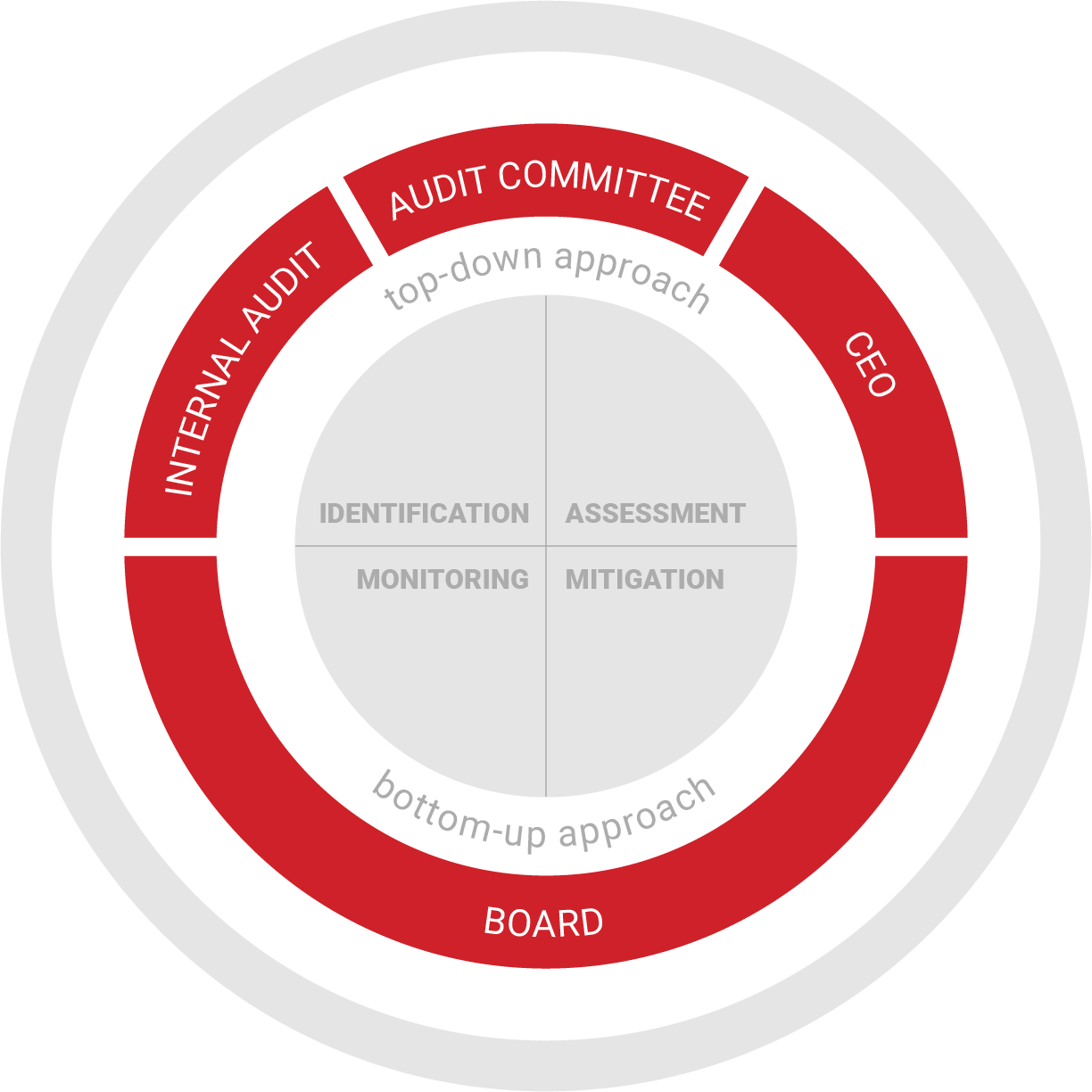Globaltrans faces a wide range of potential and current risks to its business. To identify, evaluate and mitigate these risks, the Company has established a system for monitoring and controlling uncertainties and threats that it faces. This system is overseen by a dedicated risk management function. The Board of Directors has overall responsibility for the Company’s risk management.

The Board, as part of its role in providing strategic oversight and stewardship of the Company, is responsible for maintaining a sound risk management and internal control system. As part of that system, the Board determines principal risks and sets respective risk tolerance levels. Globaltrans has adopted a risk management policy that provides a consistent framework for the identification, assessment and management and, where possible, mitigation of risks.
The oversight of risk management is delegated to the Audit committee. In addition, the Board has delegated to the CEO the responsibility for the effective and efficient implementation and maintenance of the risk management system. The Directors, through the Audit committee, review the systems that have been established for this purpose and regularly review their effectiveness. Appropriate actions are then taken to manage the risk to an acceptable level as defined by the Board.
Risk management principles
Globaltrans bases its risk management activity on a series of well-defined risk management principles, derived from experience, best practice and in accordance with corporate governance principles. The Company’s risk management principles consist of nine interdependent components.
Enterprise-wide
Risks that the Group faces should be managed on an enterprise-wide basis as a continuous and developing process that runs throughout the Group’s strategy and the implementation of that strategy.
Systematic and structured
Risk management should involve recognised processes and activities in a systematic, methodical way that ensures the results of risk management activities are reliable, robust and comparable.
Based on top-down and bottom-up approach
Risk management should evaluate the potential upside and downside of all risks that could affect the Group. It should increase the probability of success and reduce both the probability of failure and the uncertainty of achieving the Group’s overall objectives. Risk management activity should include the development and implementation of risk response actions to remove or mitigate all risks the Group faces, transfer them to a third party or accept them.
Forward-thinking approach
Risk management should be forward thinking. It should involve identifying and preparing for what might happen rather than always managing retrospectively. Risk management should encourage the Group to manage proactively rather than reactively.
Aligned with the Group’s objectives
Risk management should be aligned with the Group’s objectives and provide reasonable assurance regarding the achievement of those objectives.
Integrated into the Group’s business
Risk management should be embedded in all the Group’s practices and business processes so that it is relevant, effective, efficient and sustained. In particular, risk management should be embedded in key business processes, including business and strategic planning, budgeting and decision-making. All Group staff should be responsible and accountable for managing the risks in their activities.
Integrated into corporate culture
Risk management should be a part of the Group’s corporate culture. All employees should be aware of the relevance of risk to the achievement of their objectives.
Clear and understandable
Risk management principles, methods and tools should be clear and easily understood by the Group’s employees.
Evolving
The Group’s risk management system should be continually evolving. The management of risk is an ongoing process and it is recognised that the level and extent of the risk management system will evolve as the Group evolves.




